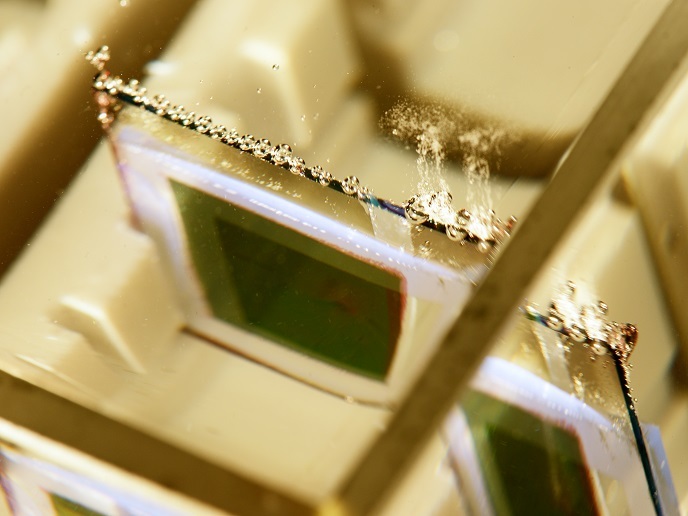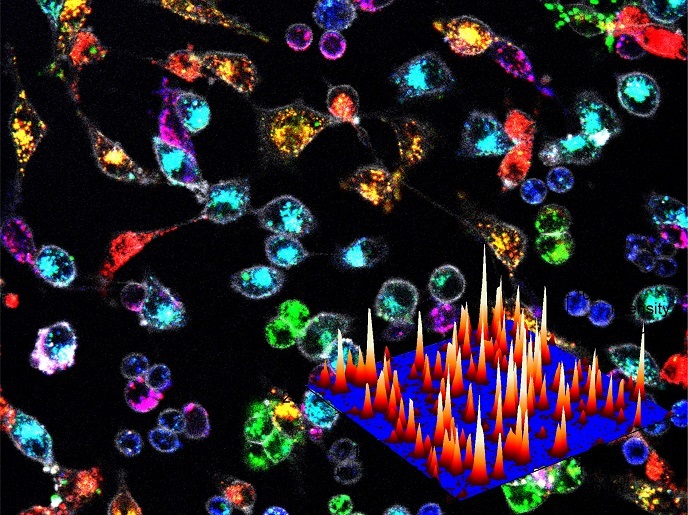Organic solar cells could transform renewable energy storage
Despite the potential of any solar power technology to reduce carbon emissions, storing the energy it generates is one of the greatest barriers to the adoption of renewable energy. Some first firm ideas about storing the energy from sunlight in the chemical bonds of molecules, just like molecular hydrogen, are already taking shape. Hydrogen storage is enabled by devices called electrolysers. Using electricity – ideally from solar power – electrolysers split water into oxygen and hydrogen, a carbon-free fuel. A second set of devices called fuel cells can then convert that hydrogen back to electricity to power vehicles or feed it to the grid.
Artificial photosynthesis put into practical use
With EU funding, via a grant from the European Research Council (ERC), researchers in the TripleSolar project demonstrated a realistic multi-junction device – made of three individual solar cells grown on top of each other – that moves solar water splitting out of the laboratory and puts it into practical applications. In a first, the project team demonstrated an artificial leaf made of organic materials that converts sunlight into hydrogen with close to 5.5 % efficiency. Except for the record-high water-splitting efficiency, what makes this artificial leaf different from other attempts to produce hydrogen using sunlight is that it uses low-cost and readily available materials. “Our new organic artificial leaf is a stepping stone to developing more real and sustainable energy solutions for the coming generations. Converting sunlight into electrical charges and storing the energy immediately will help solve the problem of inconsistent supply of renewable energy intermittency in the future,” notes ERC grantee and principal investigator René Janssen. What’s more, TripleSolar demonstrated next to triple-junction solar cells, the first quadruple-junction organic solar cell made of four organic semiconductor materials. The energy conversion efficiencies of the organic solar cells exceeded 10 % and 7.5 %, respectively.
Gaining new insight into the photoconversion mechanism
Organic solar cells are one of the most promising energy conversion technologies. Thanks to the abundance of raw materials, low production costs, light weight, and flexible and large-scale fabrication, they could become a viable alternative to conventional solar cells with silicon substrates. Current organic solar cells can achieve efficiencies over 15 %. Multi-junction solar cell architectures can further increase this efficiency to more than 20 %. Reaching these high efficiency rates is a tremendous challenge that requires pushing every single step in the conversion process to its intrinsic limits to substantially reduce energy losses. TripleSolar investigated and designed new functional organic molecules and polymers for use in multi-junction solar cell devices. “Our research focused on unravelling the mechanistic details of the photoconversion process (such as exciton and charge transport). This new insight aided in the design of materials that convert sunlight into electricity and store the generated energy in molecules such as hydrogen more efficiently,” explains Janssen. Unlike single-junction solar cells, multi-junction solar cells generate a high chemical potential that enables the splitting of water into hydrogen and oxygen. By studying the mechanisms that control the 3D nanoscale structure and electronic properties of the absorber layers, the project researchers demonstrated efficient solar-to-electricity, solar-to-hydrogen and solar-to-carbon-monoxide devices. “The efficiencies achieved with our organic multi-junction solar cells are still lower than their inorganic counterparts which are around 20 %. Further research will improve organic solar cell technology in terms of efficiency, stability and cost, ultimately helping it to be deployed at scale,” concludes Janssen.
Keywords
TripleSolar, hydrogen, organic solar cell, renewable energy, multi-junction, artificial leaf, energy storage







